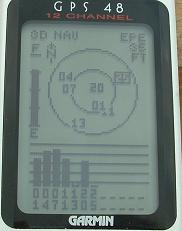




| Bar Number (counting from the bottom) |
Signal strength for bar aligned with line |
| 5 |
-122 dBm |
| 4 |
-127 dBm |
| 3 |
-132 dBm |
| 2 |
-135 dBm : starts going a bit noisy |
| 1 |
-139 dBm : signals bouncing on and off |